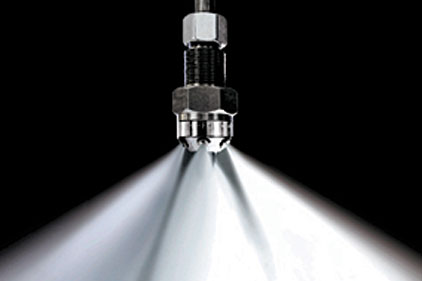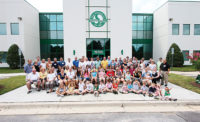Live burn underscores importance of fire sprinklers.
My favorite television show is the 1970s drama “Emergency!” which chronicles the happenings at a Los Angeles County fire department and nearby hospital. Those who smile when they hear “Rampart,” “KMG 365” and “IV-D5W” know what I’m talking about.
During one episode, a portion of Rampart General Hospital catches fire and a worker is shown staggering out of the entrance with his back ablaze before rescue personnel extinguish him.
Back then, I didn’t grasp the seriousness of fire. I must admit the gravity of fire and its consequences still hadn’t fully hit home until I attended a live burn demonstration recently at fire sprinkler system manufacturer Xylem’s headquarters in suburban Chicago.
The demonstration, attended by dozens of Chicago firefighters and inspectors, hammered home how a residential fire suppression system can help fight fires and reduce fatalities. Your supply house may stock these types of fire protection products.
At the burn site, two model living rooms were constructed side-by-side and filled with similar furniture typical of that space. One room had a fire sprinkler; the other did not. Both had smoke alarms.
The nonsprinklered room needed only 100 seconds to reach flashover (about 1,100° F and the point where nobody gets out alive). I tried to videotape it, but had to turn away less than a minute in because of the intense fire and smoke. You can see the video and my video interview with A-C Fire Pump’s Hans Stewart at our Video Spotlight section online.
“Half a couch and a recliner was all the material that burned and made the fire go to flashover,” says Northern Illinois Fire Sprinkler Advisory Board’s Tom Lia, who directed the demo.
It took less than 25 seconds for the other room’s fire sprinkler to activate. The room sustained minor burn damage and Lia notes a family likely could have moved back in that same day.
Fire sprinklers, however, remain a hot topic for debate. While there are national code mandates in place for fire sprinklers in new home construction, states and municipalities ultimately have the final say regarding implementation. California is the lone state that mandates fire sprinkler installation in new home construction. Nearly all Maryland counties have adopted the requirement. Pennsylvania controversially repealed its mandate last year, while other states have rejected the mandate or delayed implementation. At the crux of opposition is the added cost a sprinkler system brings to a new home (a recent report reveals the cost of installing home fire sprinklers averages $1.61 per sq. ft. for new construction).
“Home builders feel they are eating the cost of sprinklers, when it’s the homeowner paying for it,” Lia says. “There have been studies done and nobody has declined to buy a house because it was sprinkler-protected.”
Lia says 75 municipalities in the Northern Illinois area have included a new-home sprinkler requirement in their model codes, while Chicago building owners with structures over a certain size must have sprinklers installed by 2015. The city made national headlines earlier this year after a woman died riding an elevator in a burning high-rise void of fire sprinklers.
“A community has to take the requirement out of a code and, to me, if they do that they are assuming a lot of liability,” Lia says. “I’d hate to be a trustee or a mayor that deleted those code sections and had people die in a fire.”
Proper fire sprinkler education also is necessary. “People watch movies and get this Hollywood impression that once a sprinkler activates, they all activate and then the house is ruined,” says Vince Rodriguez, vice president of operations at Sugar Grove, Ill.-based manufacturers rep APEX Pumping Equipment, who attended the burn. “When people understand how they work, it makes a difference.”
I realize economic times are tough and builders and homeowners alike still feel the monetary pinch, but the numbers are overwhelming. National Fire Protection Association’s Fire Sprinkler Initiative reports the risk of a fire-related death decreases by about 80% when sprinklers are present in a home.
What I saw in that controlled burn was extremely scary. The difference between life and death could boil down to a having a system similar in price to what is spent on carpet upgrades in a home.
To quote a professional sports television color analyst, where is the vice president of common sense?





